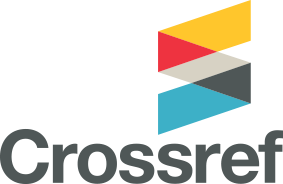Mechanical Properties Investigation of Composite Material Under Different Parameters Variations
DOI:
https://doi.org/10.22153/kej.2017.09.001Keywords:
Mechanical properties, composite material, polyester, Taguchi techniqueAbstract
The main objective of this research is to design and select a composite plate to be used in fabricating wing skins of light unman air vehicle (UAV). The mechanical properties, weight and cost are the basis criteria of this selection. The fiber volume fraction, fillers and type of fiber with three levels for each were considered to optimize the composite plate selection. Finite element method was used to investigate the stress distribution on the wing at cruise flight condition in addition to estimate the maximum stress. An experiments plan has been designed to get the data on the basis of Taguchi technique. The most effective parameters at the process to be find out by employing L9 (33) orthogonal array, signal to noise ratio (S/N), main effect and analysis of variance (ANOVA). The results show that, the experimental and the predicted results are very close. It was found that the type of fiber is the most effective parameter on the plate selection, followed by filler content and then the fiber volume fraction. The best parameters combinations are ((E-glass woven roving + unidirectional carbon) fiber, 7.5% graphite filler and 30% fiber volume fraction). This combination provides good mechanical properties, high safety factor, acceptable cost, and offers weight savings on average by 40% percent as compared to aluminum alloy.
Downloads
Downloads
Published
Issue
Section
License
Copyright: Open Access authors retain the copyrights of their papers, and all open access articles are distributed under the terms of the Creative Commons Attribution License, which permits unrestricted use, distribution, and reproduction in any medium, provided that the original work is properly cited. The use of general descriptive names, trade names, trademarks, and so forth in this publication, even if not specifically identified, does not imply that these names are not protected by the relevant laws and regulations. While the advice and information in this journal are believed to be true and accurate on the date of its going to press, neither the authors, the editors, nor the publisher can accept any legal responsibility for any errors or omissions that may be made. The publisher makes no warranty, express or implied, with respect to the material contained herein.
















